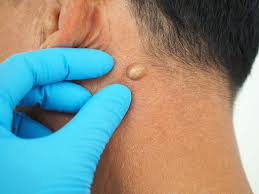Lipoma Removal Surgery: A Step-By-Step Guide
If you have been diagnosed with a lipoma and are considering surgery to remove it, you likely have a lot of questions about the procedure. Lipomas are benign (non-cancerous) tumors made up of fatty tissue. They are usually soft, movable, and painless lumps that grow slowly under the skin. While they are typically harmless, some people opt to have them removed for cosmetic reasons or if they cause discomfort. This blog provides a comprehensive, step-by-step guide to lipoma removal surgery to help you understand what to expect before, during, and after the procedure.
What is a Lipoma?
A lipoma is a common type of soft tissue tumour that forms from fat cells. They are usually found just below the skin, and they feel soft and rubbery to the touch. Lipomas can vary in size and can appear anywhere on the body. Most are harmless and do not require treatment unless they become bothersome or grow to a size that causes discomfort or self-consciousness.
Why Remove a Lipoma?
Although lipomas are generally not a cause for concern, there are several reasons you might choose to have one removed:-
- Cosmetic Reasons: Some people prefer to have lipomas removed for aesthetic reasons, especially if they are in a visible area.
- Discomfort: If the lipoma is causing discomfort or pain, removal may be recommended.
- Size Increase: If a lipoma grows larger over time, it might need to be removed.
- Uncertainty: In rare cases, a biopsy might be needed to confirm that the lump is indeed a lipoma and not another type of tumor.
Preparing for Lipoma Removal Surgery
- Consultation with Your Surgeon:
- Initial Assessment: Your surgeon will examine the lipoma and may order imaging tests, such as an ultrasound, to assess its size and depth.
- Discussion of Options: You’ll discuss the different surgical options available, including the benefits and risks of each.
- Medical History: Provide your surgeon with your complete medical history, including any allergies, medications you’re taking, and any previous surgeries.
- Pre-Surgery Instructions:
- Avoid Certain Medications: You may be advised to stop taking certain medications, such as blood thinners, a few days before surgery.
- Fasting: If you’re undergoing the procedure with sedation or general anaesthesia, you’ll need to fast for several hours before the surgery.
- Arrangements: Make arrangements for someone to drive you home after the surgery, as you might feel groggy from the anesthesia.
The Lipoma Removal Procedure
The following are the steps taken during a lipoma removal surgery:-
- Anesthesia:
- Local Anesthesia: For small lipomas, local anesthesia is typically used. This means you’ll be awake during the procedure, but the area around the lipoma will be numb.
- Sedation or General Anesthesia: For larger lipomas or if multiple lipomas need to be removed, sedation or general anesthesia might be used, making you unconscious during the procedure.
- Incision and Removal:
- Making the Incision: The surgeon will make a small incision over the lipoma. The size of the incision depends on the size of the lipoma.
- Removing the Lipoma: The surgeon will carefully remove the lipoma, along with its capsule (the tissue that surrounds it) to prevent it from growing back.
- Closing the Incision: Once the lipoma is removed, the incision is closed with stitches. The type of stitches used may vary; some dissolve over time, while others will need to be removed later.
- Post-Procedure Care:
- Bandaging: A sterile bandage will be applied to the incision site to protect it and help with healing.
- Recovery: You’ll be monitored for a short period after the surgery to ensure there are no immediate complications.
Recovery and Aftercare
- Immediate Aftercare:
- Pain Management: You might experience some soreness or discomfort after the anesthesia wears off. Over-the-counter pain relievers can help manage this.
- Wound Care: Keep the surgical area clean and dry. Follow your surgeon’s instructions on how to care for the incision site and when to change the bandages.
- Follow-Up Appointments:
- Stitches Removal: If non-dissolving stitches were used, you’ll need to return to the clinic to have them removed. This is usually done within 1-2 weeks after the surgery.
- Check-Up: Your surgeon will schedule follow-up appointments to check on the healing process and ensure there are no complications.
- Activity Restrictions:
- Avoid Heavy Lifting: Refrain from heavy lifting or strenuous activities for a few weeks to allow the incision site to heal properly.
- Gradual Return to Activities: You can usually return to normal activities gradually, but listen to your body and avoid any activities that cause pain or discomfort.
- Signs of Complications:
- Infection: Watch for signs of infection, such as increased redness, swelling, warmth, or discharge from the incision site.
- Excessive Pain: If you experience severe or worsening pain, contact your surgeon immediately.
- Bleeding: Minor bleeding is normal, but if you notice significant bleeding, seek medical attention.
Concluding Remarks
Lipoma removal surgery is a straightforward procedure with a high success rate. By understanding the steps involved and following your surgeon’s instructions, you can ensure a smooth and effective treatment. Whether the lipoma is removed for cosmetic reasons or due to discomfort, knowing what to expect can help reduce anxiety and prepare you for a successful outcome. Are you looking for options for lipoma removal in Hyderabad? Smart Surgeon is a reliable establishment.



